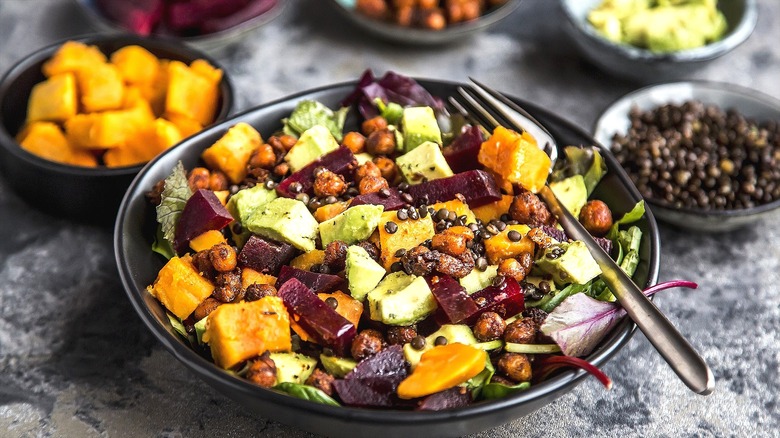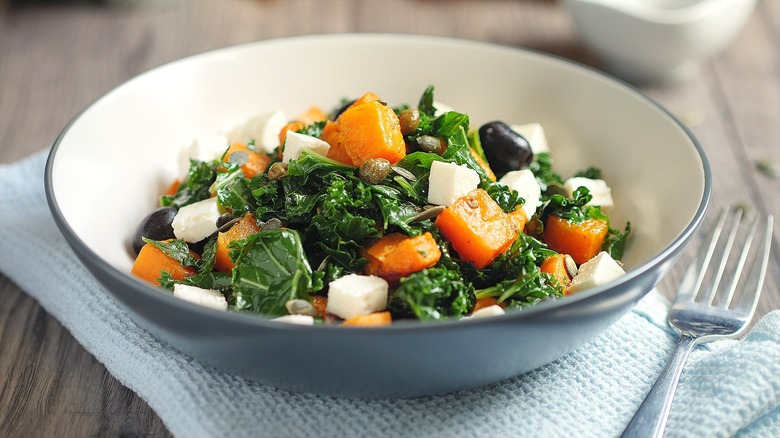The Important Step To Take When Adding Cooking Ingredients To Salads
Who doesn't enjoy freshly prepared salads with a colorful mix of both raw and cooked ingredients? While there's certainly nothing wrong with using a variety of foods to make your next salad, try to avoid topping crisp lettuce with hot foods. Since most salads are naturally hydrating thanks to leafy greens like iceberg and romaine, the residual moisture from steamed or baked ingredients may be causing more harm to your meals than you think.
If you typically enjoy lunch or dinner salads with perfectly roasted vegetables, steamed lentils, and ginger-beer battered broccoli tempura, exercise patience and wait for these foods to cool completely before adding them to the mix. Believe it or not, hot foods might accidentally cook or steam raw ingredients, which can leave your salad with a soggy, unappealing texture — especially delicate lettuce.
Additionally, if you enjoy meal prepping and happen to combine hot and cold foods in sealed containers, you run the risk of causing additional condensation. Besides waiting for your warmer foods to reach room temperature, you might also think about storing select foods in separate containers. For example, if you love the crunch of perfectly roasted broccoli, to retain its crisp texture, add it to fresh lettuce only when you're ready to eat.
For warmer salads, use heartier greens
Fortunately, certain greens like kale, Swiss chard, and collards can withstand a certain amount of heat without becoming soggy or wilted. Unlike lettuce, these are technically cruciferous vegetables and belong to the same family as broccoli and Brussels sprouts; these particular greens are as sturdy as their cabbage cousins. Due to their robust structure, warmer foods might even make these fibrous greens more enjoyable to eat by slightly softening their tough leaves.
To make a warm salad, first remove the stems from your select greens. Add a bit of your preferred dressing and massage the leaves to give them a softer consistency. You can even give kale an avocado massage for deliciously tender results. Then steam or roast your vegetables, cook any protein (if you're using some), and then build your salad. Aim to create a solid balance of both cold and warm ingredients such as shredded cheese, roasted green beans, raw sliced onion, and grilled chicken. Chewy and crunchy ingredients like dried cranberries and toasted nuts are also solid additions. Once you've chosen a colorful variety of both hot and cold ingredients, add a bit more dressing and toss everything to combine.
Alternatively, you can also remove the greens altogether. Make a steamed salad solely composed of your favorite cooked veggies and protein — or better yet, make a sheet pan meal for easier cleanup. To give these warm, alternative salads a bit of contrast, turn leftover guacamole into a creamy salad dressing or make your own from scratch.


